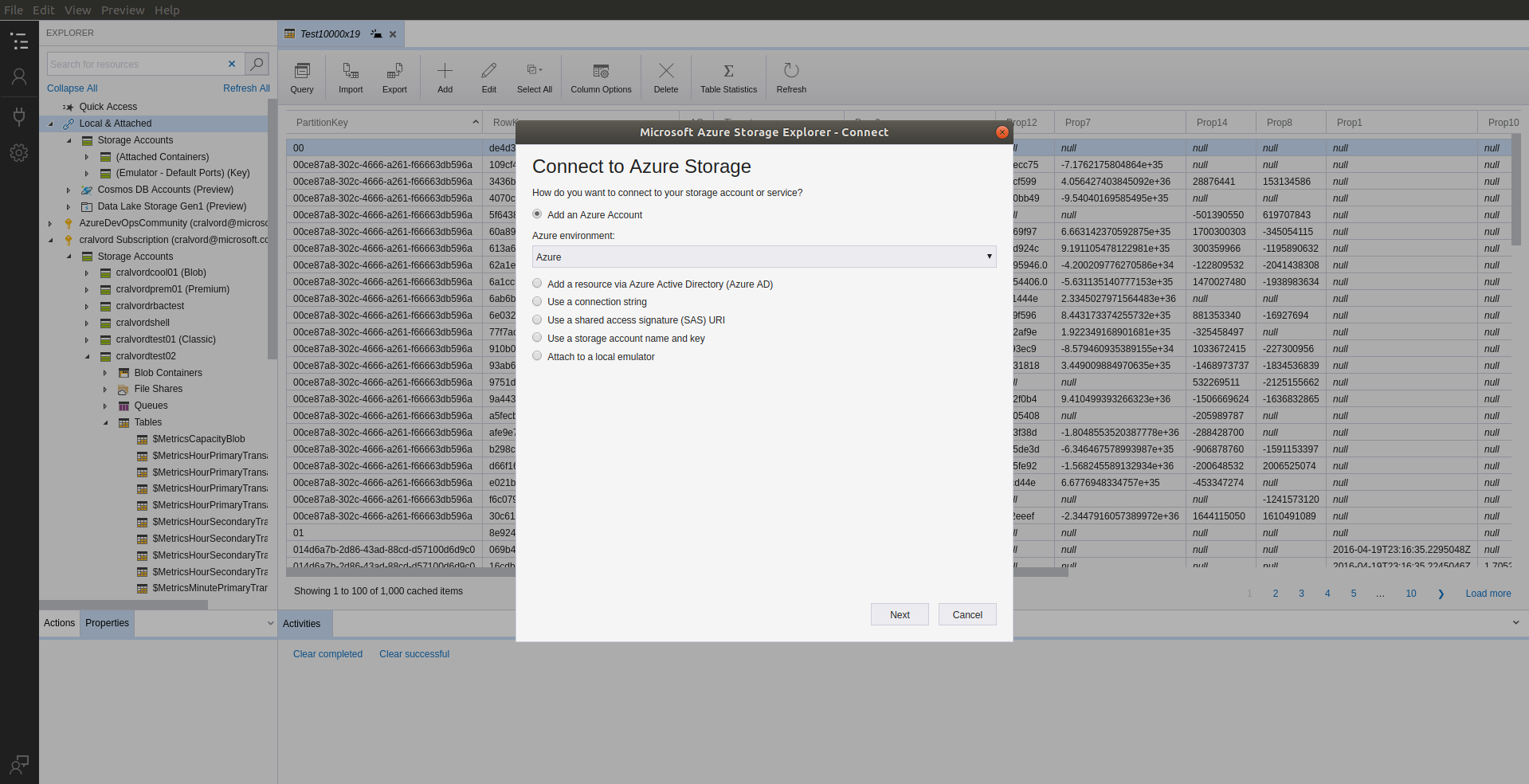

- #Microsoft azure storage explorer tutorial how to#
- #Microsoft azure storage explorer tutorial install#
- #Microsoft azure storage explorer tutorial download#
If no folder is chosen, the files are uploaded directly under the container. In the Upload to folder (optional) field either a folder name to store the files or folders in a folder under the container.

vhd/.vhdx files as page blobs (recommended). Acceptable choices are Append, Page, or Block blob.

This operation gives you the option to upload a folder or a file.Ĭhoose the files or folder to upload. Most files stored in Blob storage are block blobs. Append blobs are used for logging, such as when you want to write to a file and then keep adding more information. VHD files used to back IaaS VMs are page blobs. Once the blob container has been successfully created, it is displayed under the Blob Containers folder for the selected storage account.īlob storage supports block blobs, append blobs, and page blobs. When complete, press Enter to create the blob container. See the Create a container section for a list of rules and restrictions on naming blob containers. Select Blob Containers, right-click and select Create Blob Container. To create a container, expand the storage account you created in the proceeding step. This view gives you insight to all of your Azure storage accounts as well as local storage configured through the Azurite storage emulator or Azure Stack environments. Select the Azure subscriptions that you want to work with, and then select Open Explorer.Īfter Storage Explorer finishes connecting, it displays the Explorer tab. Storage Explorer will open a webpage for you to sign in.Īfter you successfully sign in with an Azure account, the account and the Azure subscriptions associated with that account appear under ACCOUNT MANAGEMENT. You can sign in to global Azure, a national cloud or an Azure Stack instance. In the Select Azure Environment panel, select an Azure environment to sign in to. In the Select Resource panel, select Subscription. Several resource options are displayed to which you can connect: On first launch, the Microsoft Azure Storage Explorer - Connect to Azure Storage dialog is shown.
#Microsoft azure storage explorer tutorial install#
To install Azure Storage Explorer for Windows, Macintosh, or Linux, see Azure Storage Explorer. This quickstart requires that you install Azure Storage Explorer. For help creating a storage account, see Create a storage account. For this quickstart, create a storage account using the Azure portal, Azure PowerShell, or Azure CLI. If you don't already have a subscription, create a free account before you begin.Īll access to Azure Storage takes place through a storage account. To access Azure Storage, you'll need an Azure subscription.
#Microsoft azure storage explorer tutorial how to#
You also learn how to create a snapshot of a blob, manage container access policies, and create a shared access signature.
#Microsoft azure storage explorer tutorial download#
Next, you learn how to download the blob to your local computer, and how to view all of the blobs in a container. One common questions that we get from customers and partners is how to ingest data from Azure Log Analytics / Azure Sentinel to Azure Data Explorer from different reasons: joining data between different ADX clusters, longer retention period, heavy queries that aren't alight with LA limitations and etc.In this quickstart, you learn how to use Azure Storage Explorer to create a container and a blob.


 0 kommentar(er)
0 kommentar(er)
